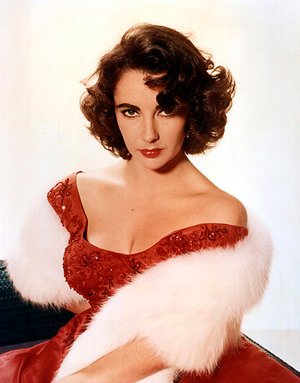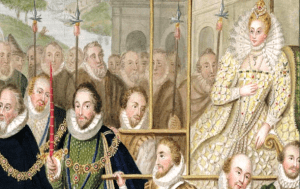Cat on a Hot Tin Pyramid
Cleopatra has died, 2,000 years after she killed herself in ancient Egypt Long live Maggie the Cat Cleopatra has died, 2,000 years after she killed herself in ancient Egypt .
Editor’s note: The third paragraph of this column has been corrected. Elizabeth Taylor did not win an Oscar for her performance in “Cleopatra,” as the original version stated.
Cleopatra has died, 2,000 years after she killed herself in ancient Egypt.
Long live Maggie the Cat.
I speak of course of Elizabeth Taylor, the American actress who played the Egyptian queen Cleopatra in the epic movie of the same name, in a performance that was not nearly as good as some of her others, such as her Oscar-winning work in “Who’s Afraid of Virginia Woolf?” But certainly it was noteworthy for a number of reasons, including the fact that she had nearly died of pneumonia while the movie was in production, and, off-screen, had been having a torrid affair with her co-star Richard Burton, who was married, like Elizabeth, and like Marc Antony, the character he played. She had already brought a great deal of notoriety to the project. For instance, to use tabloid parlance, she had “broken up” actress Debbie Reynolds’ marriage to Eddie Fisher, stealing the handsome crooner from “America’s sweetheart,” marrying him and then moving on when she fell in love with the explosive Welsh actor Burton on the set of “Cleopatra.” All of this became part of the national scripture at the moment it was unfolding — so celebrated were the players, so beautiful, so sexy. Yet those were not the only reasons. As it happened, Elizabeth Taylor’s affairs — and life — mirrored those of Cleopatra, the timeless seductress of powerful and married men, elevating a great Hollywood scandal to a fairy tale for the ages. The narrative was not simply “beautiful movie stars run away with each other,” but “film queen swept away by Roman general.” With the spectacle of this film, the figures of Cleopatra and Elizabeth Taylor were permanently conflated, creating a supernova the likes of which we shall not see again.
When Cleopatra killed herself in 30 B.C., she was 39 years old. She was already notorious, a woman who had descended from a line of royals and come into her reign as Rome was expanding and consolidating its empire. The intrigue of that era cannot be overstated: assassination within families to attain Pharaonic status was routine and so was murder of close associates. Along with that came marriages that were actually land mergers or acquisition of other privileges and treasure — certainly a precursor to a long-lived tradition (although latter-day prenuptial agreements have pre-empted the need for inheritance-related internecine assassinations, to a degree). Growing up in the house of Ptolemy, Cleopatra was well-schooled in palace operations and subterfuge. With Rome closing in for the kill, she saw her enemies and raised them one, forming alliances with two married suitors in succession, Julius Caesar and Marc Antony, thus maintaining Egypt’s sovereignty until the house of cards collapsed and Pharaoh was done. Rather than be hauled off to Rome in chains, she committed suicide, presumably by way of asp, although in recent times another theory involving some sort of poison has emerged. Her death was a Roman triumph, but it was not really a personal loss. In fact, she was just getting started.
A year later she began her ascension into myth, as ancient Egypt was consigned to the tombs which were already lining the throughways. She made her first major comeback in a magnificent victory pageant staged by the conqueror Octavian on the streets of Rome. As Stacy Schiff writes in her acclaimed book “Cleopatra,” she “paraded in effigy in the last and most sumptuous of Octavian’s three days of triumph … a veritable river of gold, silver, and ivory flowed down the Via Sacra and through the Forum … the Egyptian procession surpassed all others. … After the coffers of gold and silver; the wagons of jewelry, weapons, and art; the colorful placards and pennants, the ten-year-old twins and six-year-old Ptolemy Philadelphus [her children], in chains. Cleopatra was featured on her deathbed, in plaster or paint, along with the asp who may have started it all. … The city glimmered with the spoils of Egypt; tons of Ptolemaic gold and silver, breastplates and tableware, crowns and shields, gem-studded furniture, paintings and statuary, had sailed with Octavian, as had several crocodiles. …”
But the mythologizing of Cleopatra began even before she died, with palace gossips and scribes noting the queen’s use of her sexuality to acquire power. Yet, as Schiff notes, it was Julius Caesar and Marc Antony who were truly promiscuous. In fact, Cleopatra may well have slept with just those men in her short life, but at the time she was known as “the consort of two men of voracious sexual appetite and innumerable sexual conquests,” and later “as the snare, the delusion, the seductress.” Over the centuries, her tale was told and retold by the men who wrote prevailing accounts of what happened, rarely giving her credit for her role in establishing the great (and vanished) library at Alexandria, and her ability to keep Egypt in business while the Romans sought to consume it. Instead, this parade of scribes saw Cleopatra in one way only, a creature of sexual desire, beginning with Propertius, the Roman scribe who called Cleopatra “the whore queen,” followed by Dante, for whom she was a carnal sinner, followed by Boccaccio, who called her “the whore of eastern kings.” And of course in the 16th century Shakespeare came a-knocking, with his play “Antony and Cleopatra,” which includes the famous passage:
Age cannot wither her, nor custom stale Her infinite variety. Other women cloy The appetites they feed, but she makes hungry Where most she satisfies. For vilest things Become themselves in her, that the holy priests Bless her when she is riggish.
By the 20th century, Cleopatra was such a notorious siren that she received the Cecil B. DeMille treatment, played by the great beauty Claudette Colbert in the 1934 film named after the queen. But that’s not the same as being played by Elizabeth Taylor, in color, on a gigantic screen, in an extravaganza that nearly bankrupted the studio — one more reflection of ancient Egypt (for my essay on Hollywood as land of Pharaoh, see “Cairo-by-the-Mojave”). For her role in the movie, Elizabeth Taylor received $1 million, at that time the highest figure an actress had ever been paid—and apparently her salary skyrocketed, due to years of delays. The four-hour epic received mixed reviews but in addition to Taylor and Burton had a fine cast, with Rex Harrison as Caesar and Roddy McDowall as Octavian. All, though, were saddled with a ham-handed script. Like many Hollywood films, this one had several writers, actually make that eight, resulting in what is possibly the ultimate Tinseltown collaboration—Plutarch, Suetonius and Ben Hecht; accordingly — at best — it is overwritten. “My breasts are full of love and life,” goes one of Cleopatra’s lines. “My hips are round and well apart. Such women, they say, have sons.” Well, the movie didn’t win a best screenplay award, and this line explains why — although certainly only Elizabeth Taylor could get away with uttering a piece of dialogue better suited for opera or the cutting room floor. It’s all because of her looks. And now there is something else that must be mentioned, a major inaccuracy in the film that has come to light — at least for many of us, I think — and it bears mention because it goes to the strange thing that happened when the two notorious women, Cleopatra and Elizabeth Taylor, met forever on celluloid.
Quite simply, Cleopatra — the mother of all sirens — was not drop-dead gorgeous. Nor was she beautiful. In fact, you could say that she was not even pretty. We know this from coins bearing her image which are reproduced in Schiff’s book. Having seen those images, I now realize that if the great Hollywood production called “Cleopatra” had not been made, or if it had been made with anyone other than Elizabeth Taylor, Cleopatra may well have vanished into the Sahara, where she has resided all along, rolled out occasionally by academics, Egyptology freaks, feminists and students of literature. You see, her tomb has never been found. Because of that, until the movie with Taylor came along, she was not on the way to becoming another King Tut, for instance, popping up in a latter-day traveling circus of mummified remains and relics with hordes of moderns queued up at the deathbed. Elizabeth Taylor resurrected her and, oddly, the movie rendered the discovery of her tomb pointless; one of the last scenes takes place inside it.
As for Elizabeth Taylor, well, her own life eclipsed the story that was portrayed on the screen, adding to the ancient queen’s allure and conflating the timelessness of the enduring saga with her own. During the filming of “Cleopatra,” Elizabeth Taylor became Cleopatra, or perhaps Cleopatra had become Elizabeth Taylor, and as the years went by we watched as Richard Burton adorned her with diamonds and we witnessed her every public proclamation of love for pearls and emeralds and things that are luxe, and it became impossible to think of one woman without the other, and as great an actress and figure as Taylor was, I wonder if she would have achieved such magnitude had she not played the infamous and long-gone royal who presided over a state that was encased in gold and swathed in gems.
Prior to making “Cleopatra,” Elizabeth Taylor had starred in “Cat on a Hot Tin Roof,” the powerful film based on a play by Tennessee Williams about the passing of a generation in an old Southern family. Here is a movie in which personal lies—some at least—are the truth, a fact of life that only a great writer can deliver. In one of her finest performances, Elizabeth Taylor plays the noble and tormented Maggie, aka Maggie the Cat, wife of the troubled and handsome scion Brick, played by Paul Newman. As Big Daddy (Burl Ives) prepares to die and hand off his fortune, his idiot son Gooper and conniving daughter-in-law Mae try to push Maggie and Brick aside. But of course the truth outs and Big Daddy says so: “Didn’t you notice a powerful and obnoxious odor of mendacity in this room? … There ain’t nothin’ more powerful than the odor of mendacity. You can smell it. It smells like death.” And then comes the honest lie. As Big Daddy prepares to honor Brick, Maggie seals the deal with “an announcement of life beginning. A child is coming. Sired by Brick out of Maggie the Cat. I have Brick’s child in my body and that is my gift to you.” “Yes sir,” Big Daddy replies, “the girl has life in her body.” But she is not pregnant, and later she thanks Brick for backing her up in her lie. He tells her that they’ll make it come true. And thus the metaphor of the script has materialized. “I feel all the time like a cat on a hot tin roof,” Maggie tells her husband early in the story. “Cats jump off roofs and land uninjured,” Brick says. “Do it. Jump.” But she can’t, she explains; she loves Brick and where would she go? “What is the victory of a cat on a hot tin roof?” he asks. “Just staying on it,” she says, “as long as she can.” But in telling her lie, she has also jumped off the roof into the unknown.
As we all look back on Elizabeth Taylor’s life and career, I wonder how we would see this iconic performance if you took “Cleopatra” out of the picture. “Cat” came out in 1958, before “Cleopatra,” and was widely acclaimed. So, too, were performances in films that came later, such as her work in “Who’s Afraid of Virginia Woolf.” But if we consider Elizabeth Taylor through the prism of “Cleopatra,” if we look at her grand adventures and passions by way of this glittering pyramid, she becomes an even greater figure than she was before it was filmed, immortalized not just on the silver screen but by a sojourn in Cleopatra’s tomb. And she returned to live the myth that was assigned to the Egyptian queen, had already been living before she became her.
Last week, Elizabeth Taylor was buried at Forest Lawn, cemetery to the stars. Soon there will be a public funeral and it will be grand, no doubt, an elaborate tribute to the queen of the Hollywood nation-state. And always there is her voice, calling out from “Cat on a Hot Tin Roof.” “I’m alive!” she says, across time and forever. “Maggie the cat is alive!”
Your support matters…Independent journalism is under threat and overshadowed by heavily funded mainstream media.
You can help level the playing field. Become a member.
Your tax-deductible contribution keeps us digging beneath the headlines to give you thought-provoking, investigative reporting and analysis that unearths what's really happening- without compromise.
Give today to support our courageous, independent journalists.





You need to be a supporter to comment.
There are currently no responses to this article.
Be the first to respond.